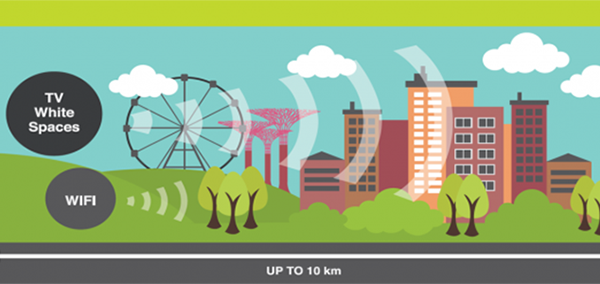Automation, analytics and alternative wireless networks take centre stage
From managing customer relations to figuring out emotions and providing wireless connectivity, digital solutions are currently available.
In this digital age, human interaction is no longer limited by distance, and the number of connections that each person can create and sustain has increased exponentially. Correspondingly, the complexity of managing relationships has grown tremendously, especially for large organisations that may have to deal with thousands of clients on a daily basis.
To cope with the sheer volume of connections as well as obtain insights into client behaviour, governments and private enterprises are turning to automation and analytics. Such digital technologies have the potential to help scale up client management without the accompanying increase in manpower cost. At the same time, by analysing data from social media platforms and other digital channels, organisations can gauge client satisfaction, streamline processes and improve products. Importantly, all these capabilities ought to be built on strong and secure wireless communications networks.
Here, we feature three TechOffers that could help your organisation widen its reach and deepen its engagements with clients and stakeholders.

Saying “hi” to AI
Customer service desks and call centres used to be the main method of engaging with clients. With the advent of chatbots and virtual assistants, the face of such operations is changing.
At their core, chatbots are artificial intelligence (AI) programs capable of natural language processing, which enables them to analyse words and sentences and respond appropriately. A conversational AI platform has been designed and developed based on these principles to automate business processes in customer service, sales and marketing.
Using retrieval-based and generative AI models, the chatbot can accurately decipher meaning from text messages, and it can develop this ‘skill’ even with a limited training dataset. Moreover, its user-friendly interface allows operators to validate the responses of the chatbot and make modifications to improve the chatbot’s knowledge over time.
Importantly, the platform can be deployed over a wide range of messaging applications, including WhatsApp, WeChat, LINE, Facebook Messenger and other chat platforms. The combined total number of active users on these applications has been estimated at three billion, and 75 percent of millennials reported that they preferred text messaging over voice calls in their interactions.
As text messaging looks set to become the dominant communication channel between consumers and businesses, it is expected that 80 percent of businesses will require a chatbot by 2020.

Getting sentimental about analytics
Even as chatbots get better at understanding and responding to human language, technology is now available to help computers understand human emotion. Emoticons aside, the use of certain words during conversations provide a window into a human person’s mood and state of mind.
Using what is known as an adaptive fuzzy similarity-based classification method, a fine-grained social media sentiment and emotion analytics platform has been developed to analyse and sort posts on social media into positive, negative, neutral and mixed emotion categories. With as little as the 280 characters of a single tweet, the platform can interpret whether an individual is feeling desire, satisfaction, anger, sadness, or anxiety, among other emotions.
In the context of enterprise, this platform could help qualify and quantify customers’ perceptions of new products or services. By collecting data about how people feel about a certain advertising campaign, business marketing teams can decide whether or not the campaign has been successful, as well as learn how to improve future campaigns.
Beyond the commercial sector, this emotion-sensing technology could also be deployed as an early warning system of emerging crises. For example, in the event of a natural disaster, Facebook and Twitter posts may appear online before traditional news outlets get wind of the developing situation. The location and severity of emergencies may therefore be quickly identified and attended to.

Filling in the gaps in wireless connectivity
Given the proliferation of digital technologies reliant on wireless networks, demand for the frequency spectrum has outpaced supply, resulting in what is known as a ‘spectrum crunch’, where the quality of wireless communications suffers. As more connected devices come online, especially with the growth of the Internet of Things industry, there is a need to optimise the use of the available frequency spectrum.
To achieve this, television white spaces (TVWS)— unused broadcasting spectrum previously occupied by analogue TV— can be leveraged for wireless data transmission. In contrast to the 5 MHz bandwidth (from 920-925 MHz) that is crowded by multiple wireless communication protocols, TVWS has a 180 MHz bandwidth allocated by the Infocomm Media Development Authority in Singapore, akin to a highway with many more lanes for traffic. This translates to a 100-fold reduction in data transmission time.
In addition, TVWS has a stronger signal penetration into buildings and provides wireless coverage over areas ten to 100 times larger than that of consumer-grade Wi-Fi networks. This makes TVWS an inexpensive option for setting up wireless communication networks in rural areas, where the cost of installing network cables may be prohibitive.

